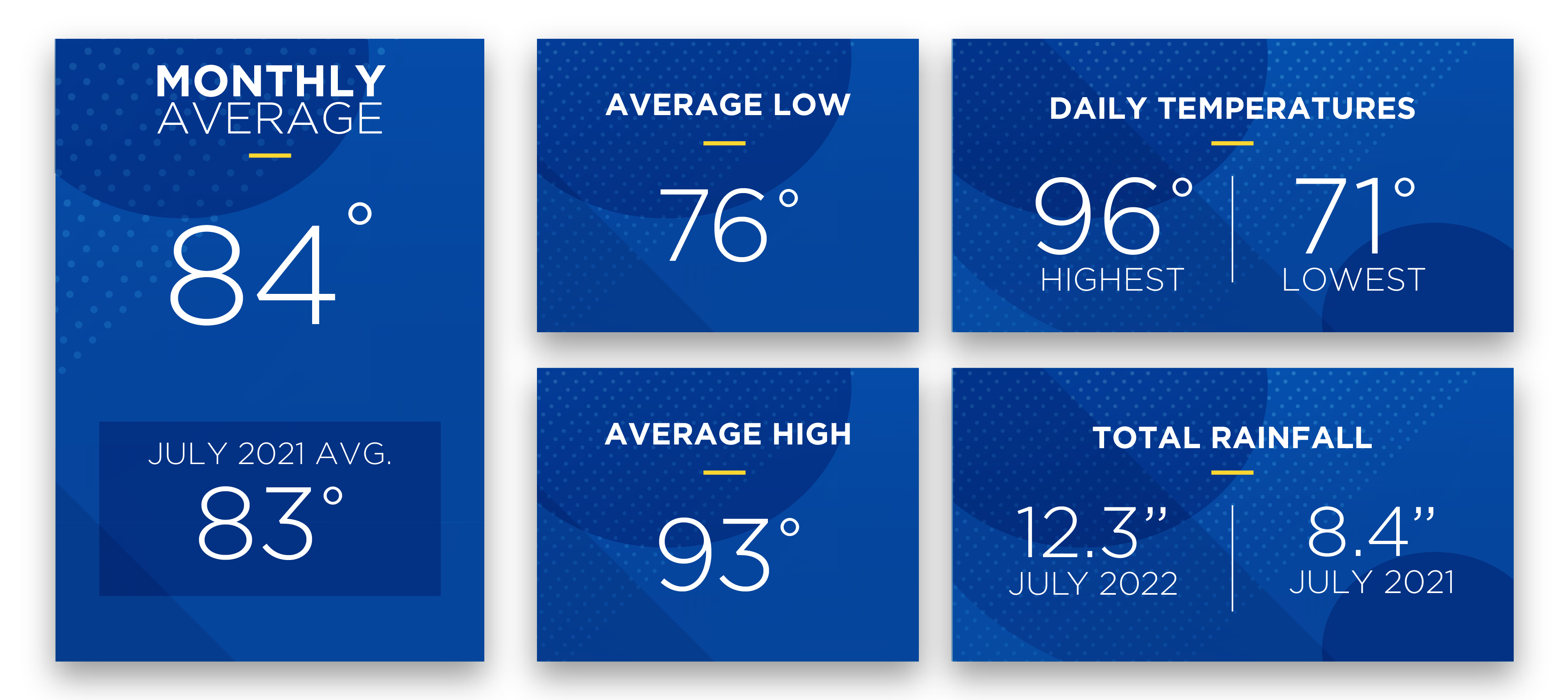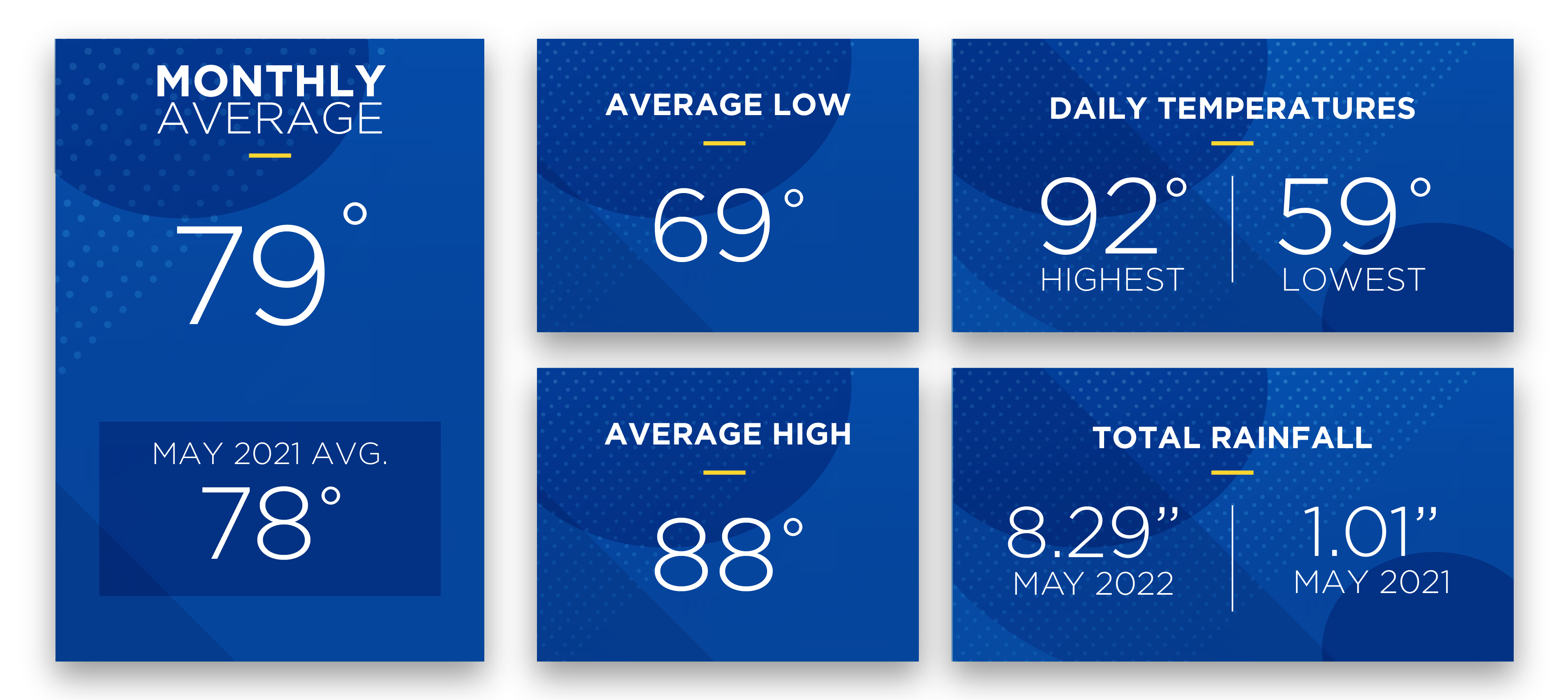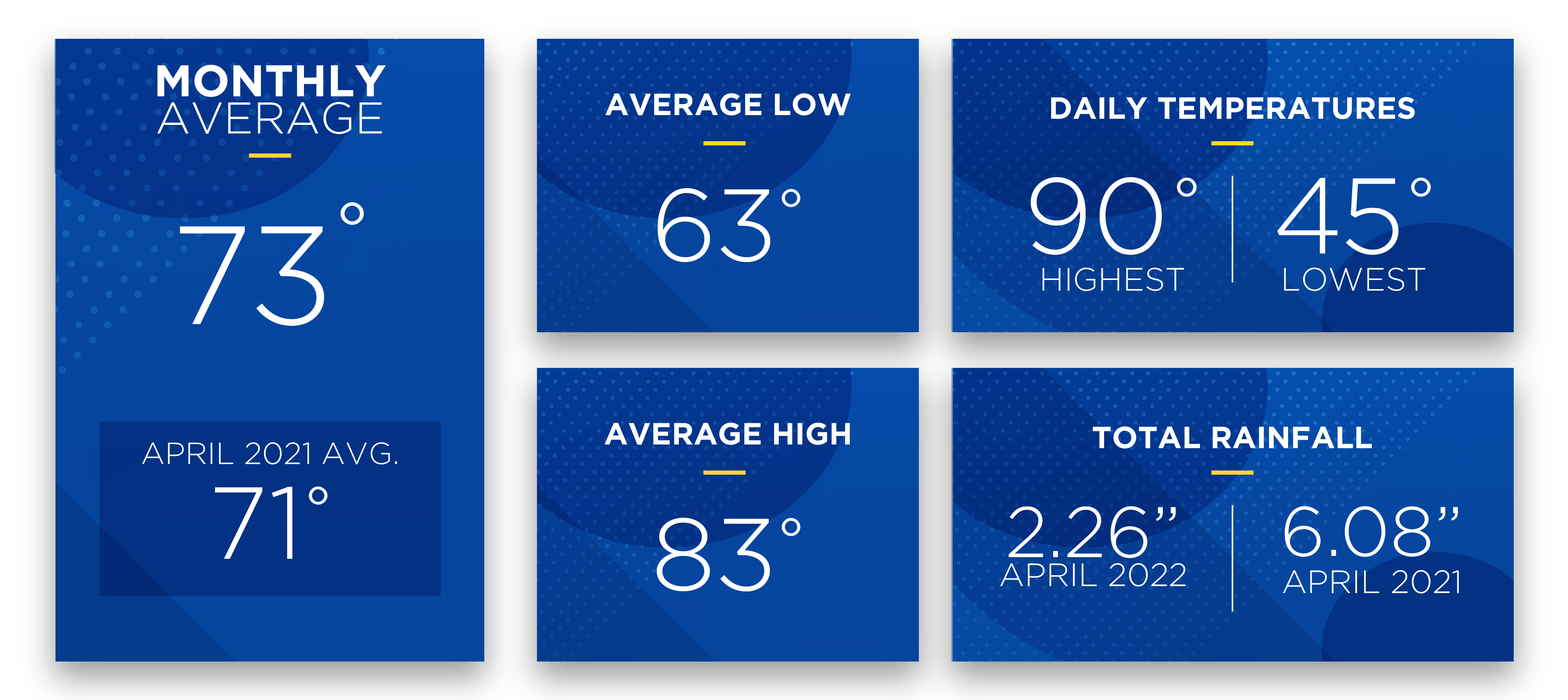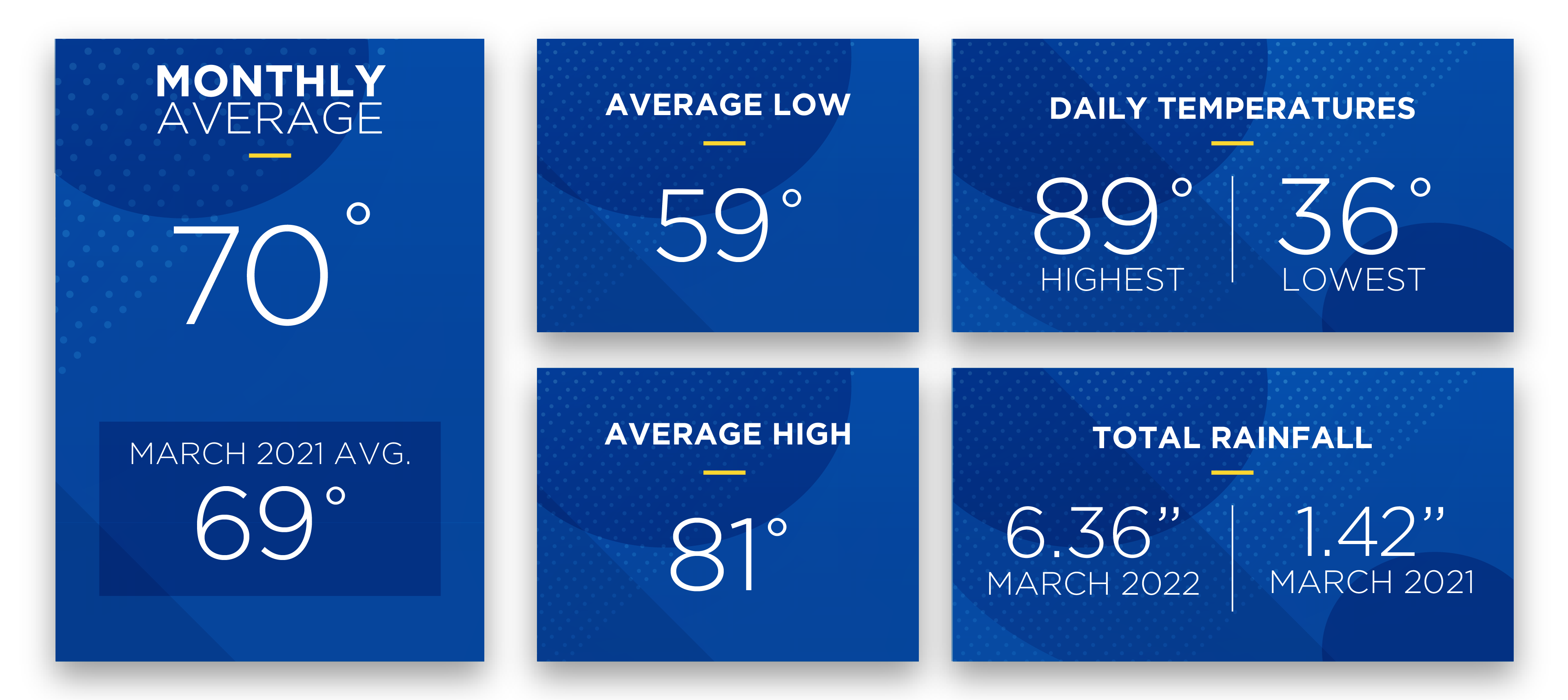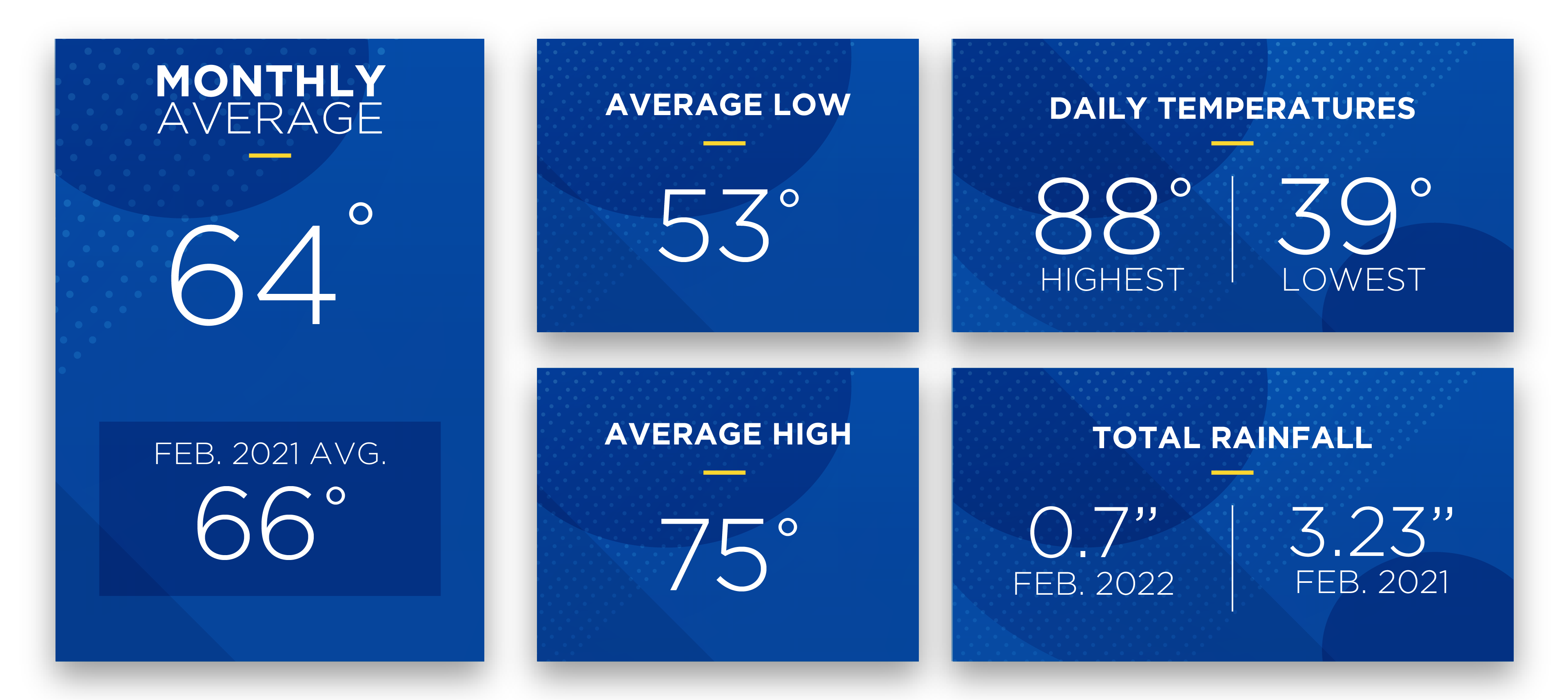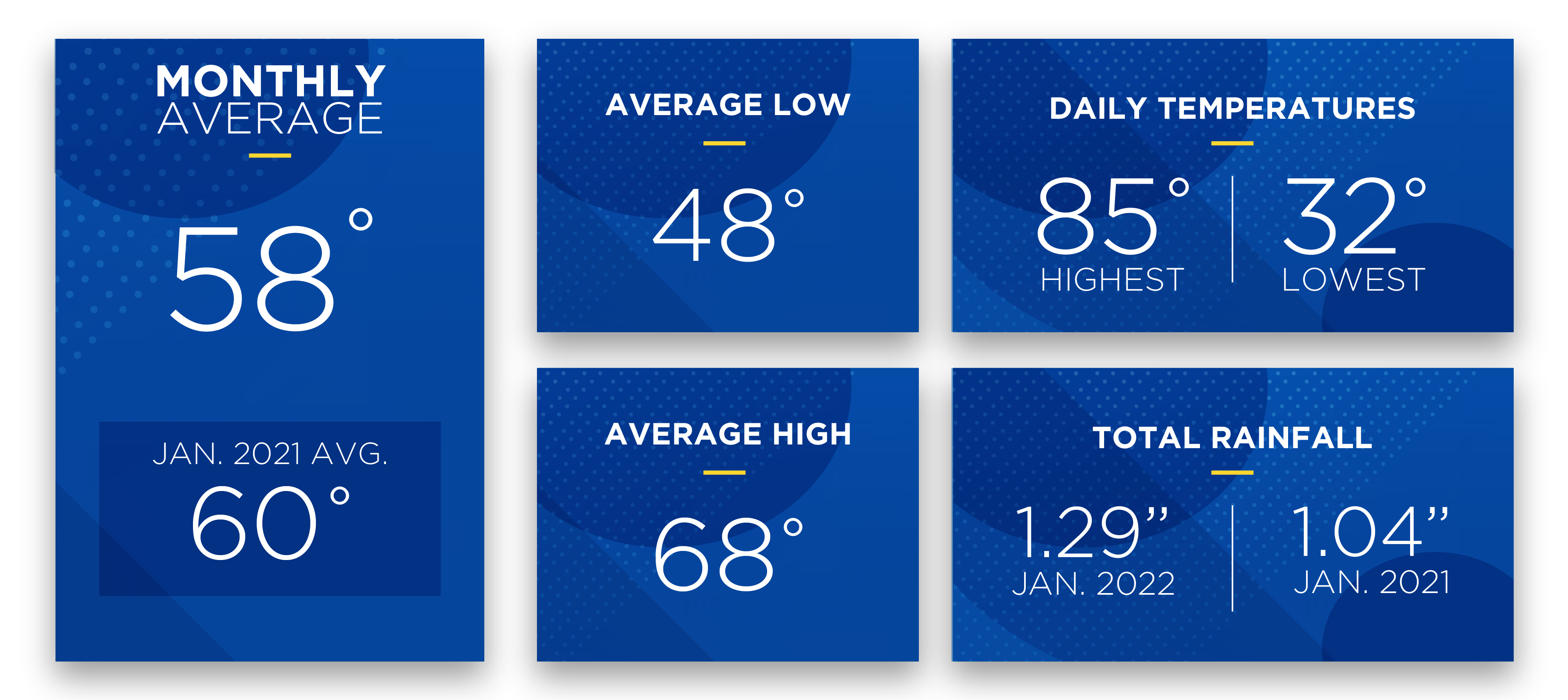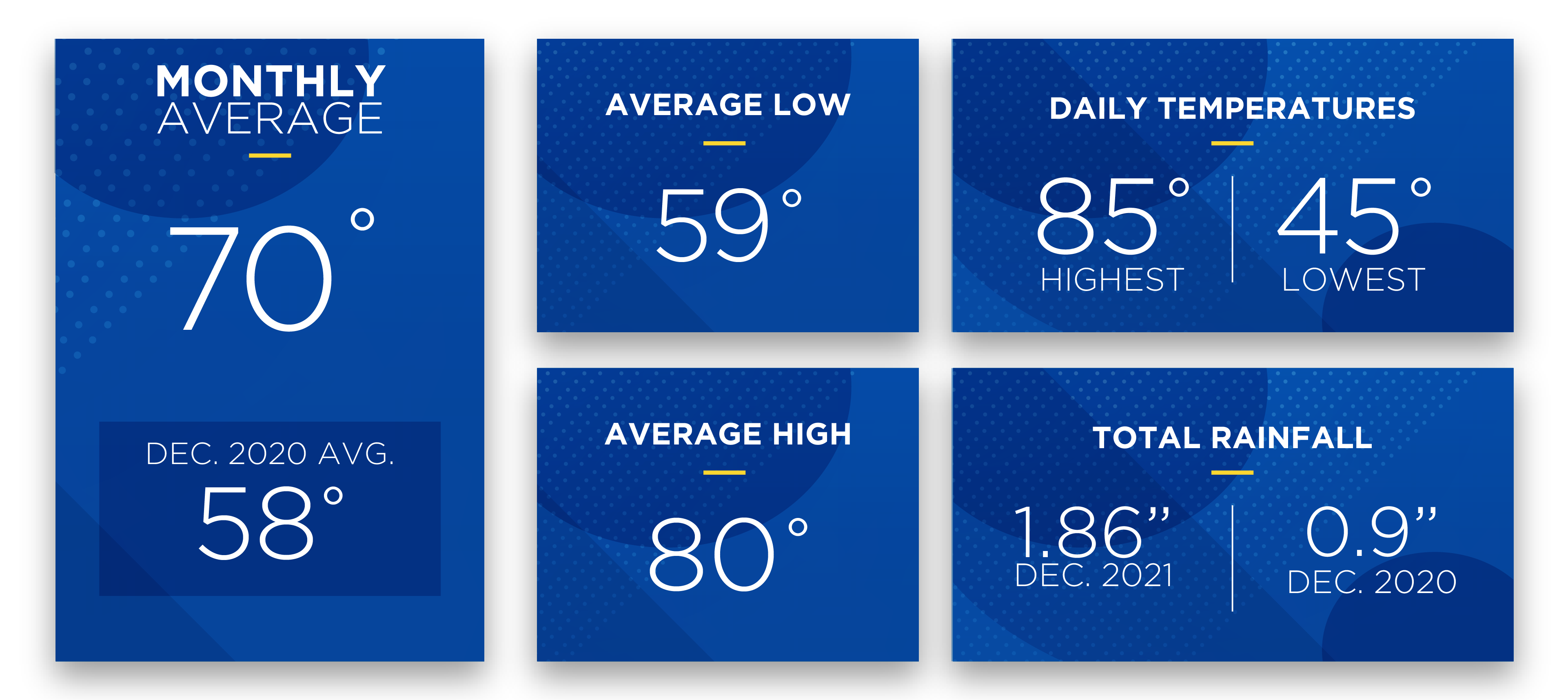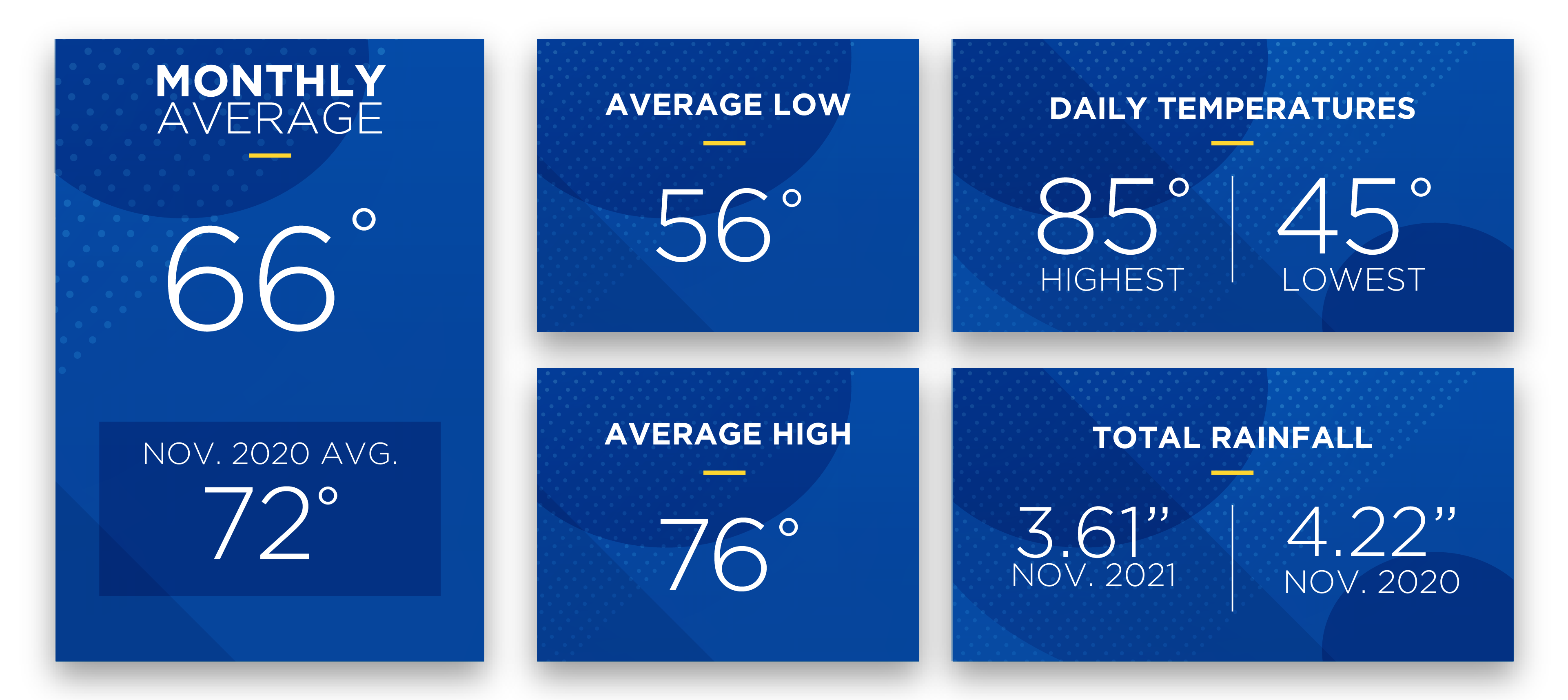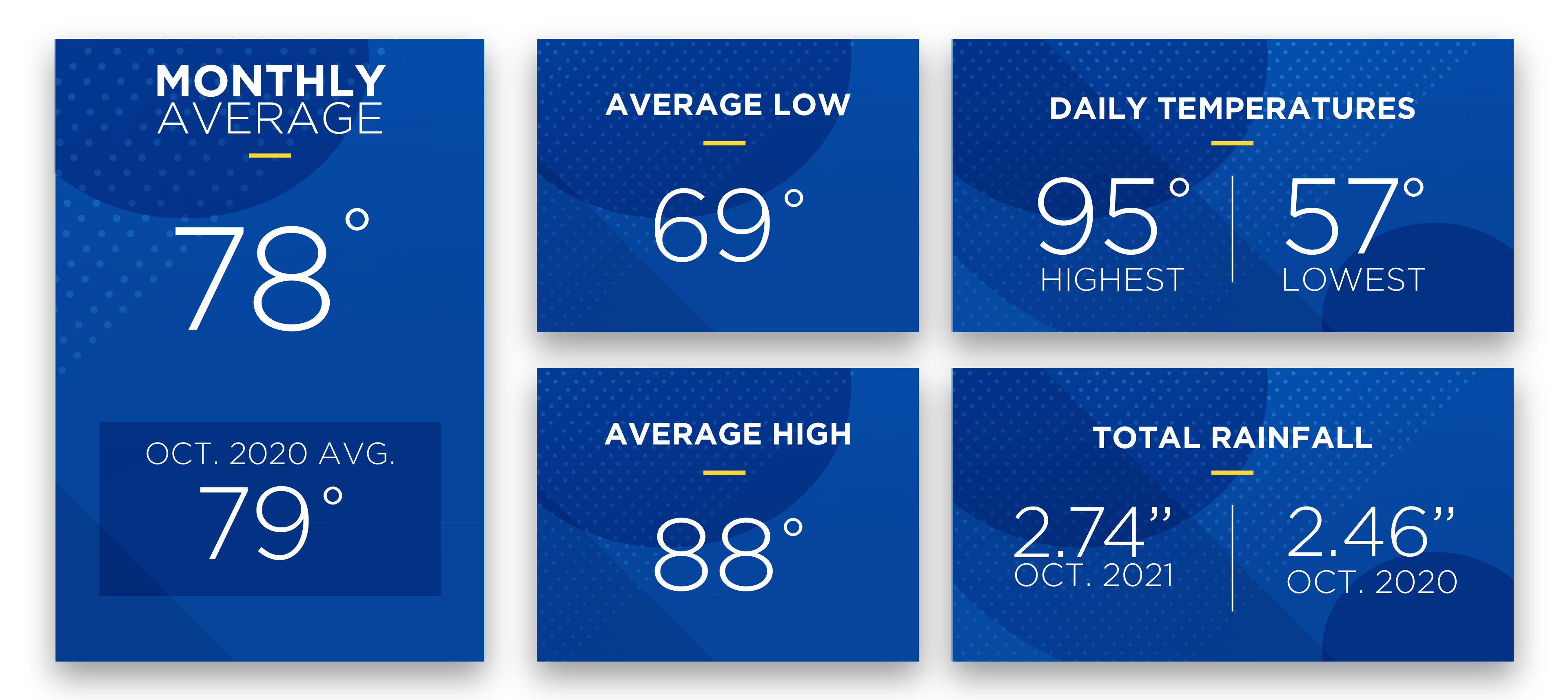July 2022 Sunshine State Stats
July 2022 in Central Florida was extremely hot and especially soggy. The average temperature for the month was 84 degrees, which was 1 degree warmer than last month’s average. The average high was 93 degrees while the average low was 76 degrees.
The highest daily recorded temperature (data from the Leesburg KLEE weather station) in July was 96 degrees and the lowest 71 – the highest daily recorded temperature in June 2022 was 98 degrees and the lowest was 69. Rainfall was above average in July. The total precipitation for the month was 12.31 inches, well above the July average rainfall of 5.67 inches.
Daily high temperatures soared over 90 degrees most days in July – 29 days of the month the daily high temp reached 90 or higher. Expect daily highs to reach into the 90s for the rest of the summer and usually into October.
Atlantic hurricane season lasts through November 30. While the Colorado State University (CSU) Tropical Meteorology Project team updated its 2022 Atlantic hurricane season forecast predicting well-above-average tropical storm and hurricane activity, the tropics have remained mostly clear early in the season. September is generally the most active month for hurricane and tropical storm activity. Have a plan in place for hurricane season. Don’t wait until a storm is approaching to prepare. Read our Hurricane Handbook to learn more about what to do before, during and after a tropical storm or hurricane.
August forecast:
Daily high temperatures will reach into the 90s for most if not all of August 2022. Daily thunderstorms are forecast throughout the month.
With increased daily temperatures, HVAC use increases as well as energy consumption. The EIA calculates the highest amount of electricity consumed in the U.S. is attributed to HVAC use. For Floridians, HVAC use is a longer span (typically early spring to late fall) than in other parts of the country and runs more frequently. It is likely the highest energy user in your home. Set your thermostat at 78 degrees or higher in the summer – every degree lower than 78 will increase your monthly bill by 6 to 8%.
To check historical usage, log into SmartHub to view past bills and consumption charts. If your usage is high, SECO offers several energy-efficiency tools to help you identify energy wasters. Take the Home Energy Assessment to receive a detailed email tailored to your home’s features and lifestyle. The energy-saving advice will provide low-cost ways to decrease your usage – and your electric bill.
To easily calculate how much energy your appliances, lighting, electronic devices, and other energy-using items in your home consume, use the Energy Estimator.




